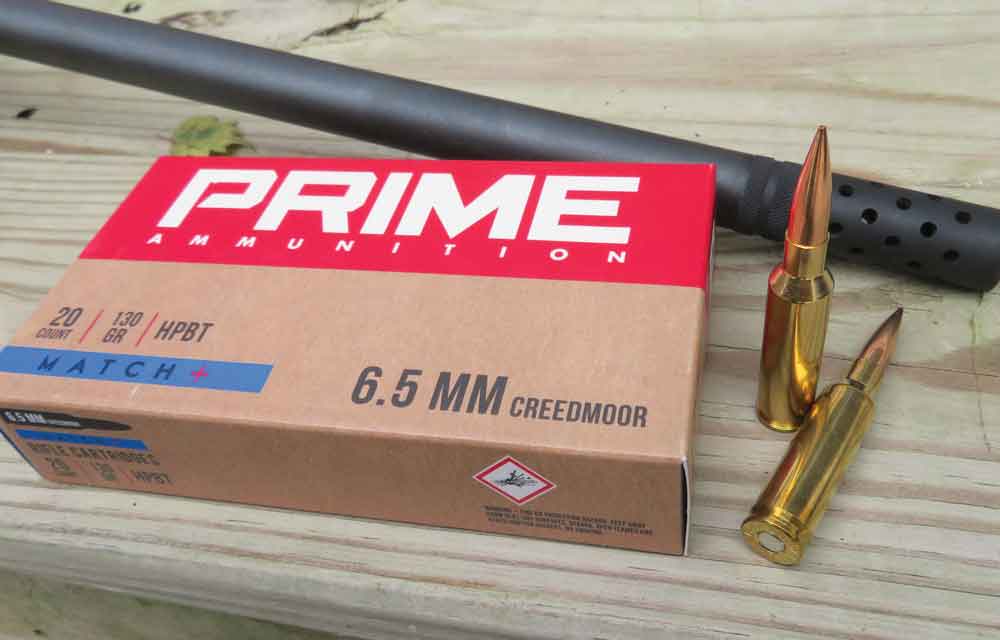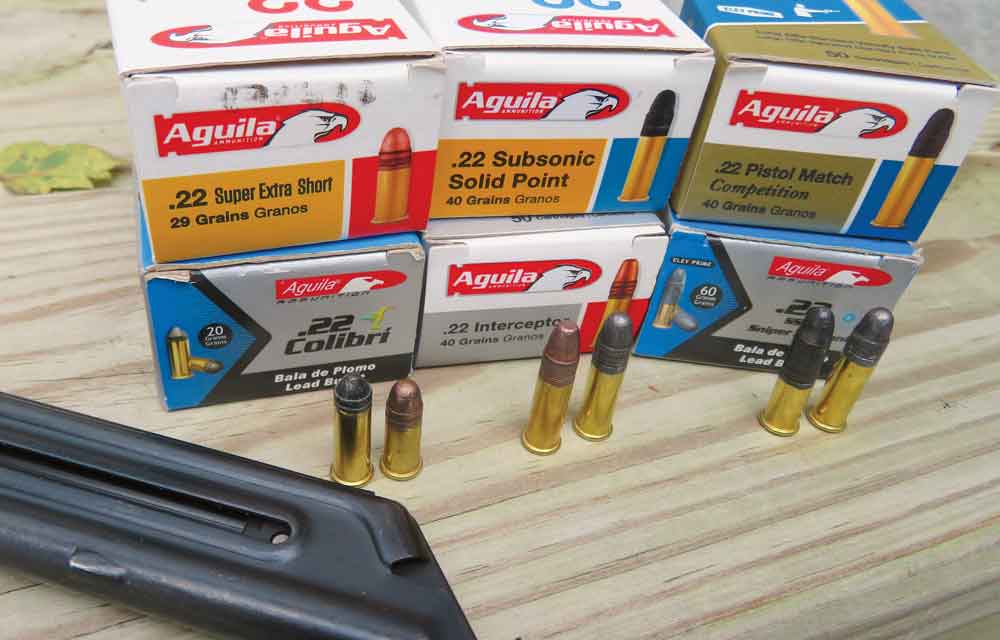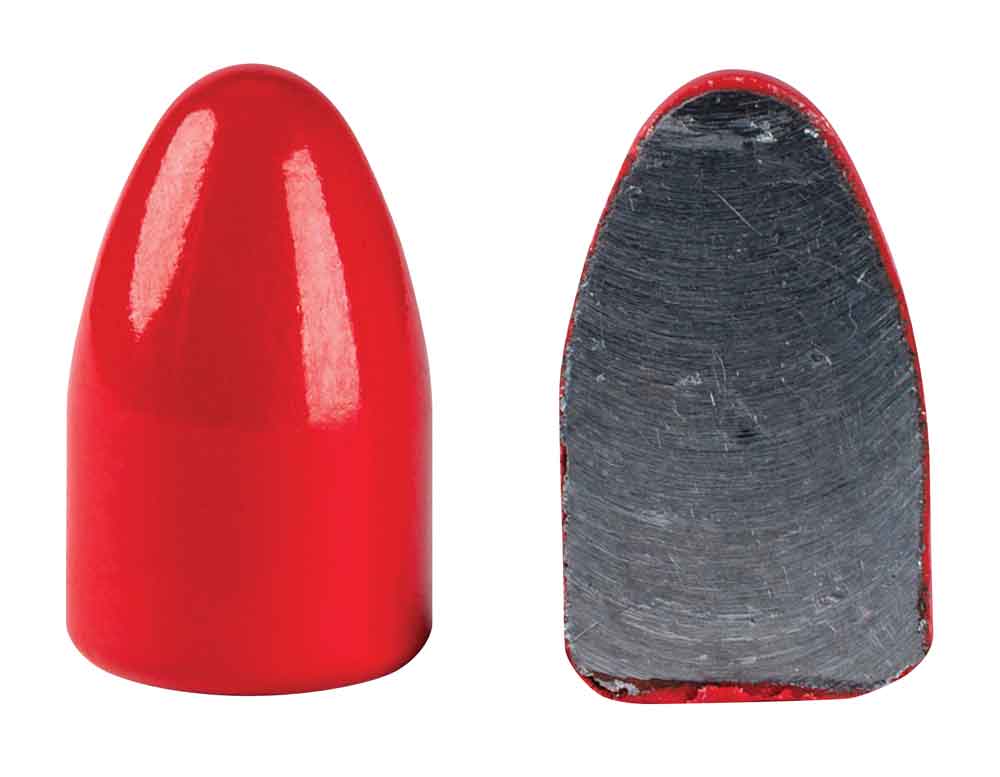
The new technology going into mass-produced ammunition is making factory ammo as good — or better — than handloads.
How has factory-loaded ammunition improved over the years:
- The quality of today’s factory ammunition, in general, is on par or better than handloads.
- Even cost wise, factory loaded ammo doesn’t run much more than reloads.
- Much of the improvement in quality is do to better tooling and manufacturing practices.
- Many manufactures also engage in cutting-edged ballistic research and development.
- And they are able to make significant quality jumps through testing at state-of-the-art facilities.
- They also have raised standards to the point a dud is are a rarity.
A pal of mine, who knows his way around a rifle and reloading press, spent hours assembling handloads for the 6.5 Creedmoor. He was trying to wring out the best accuracy, the best consistency. He tried all bullet weights and styles, different powders and primers, and cases from a variety of manufacturers. I listened about the detailed data he collected — temperature, humidity levels, wind speed, the trigger time, the time handloading hundreds of rounds.

“Have you tried Hornady’s 140s?” I asked. “They shoot sub-½-inch out of my Savage all day long.” He looked at me and conceded that he couldn’t reload better ammo despite his best efforts.
That’s the situation today. Call it an embarrassment of riches. Today’s factory ammo is good. Really good.
If you reload today, it’s not because you want stellar accuracy and consistency from your ammo. Sure, there are benchrest shooters who weigh and measure exactly to achieve phenomenal results, but for the most of us, reloading is an excuse to get away from the significant other and spend alone time in the man cave. Face it: You won’t be saving a wad of money by reloading if that’s your motivation. I’ve only seen a decrease in per-round cost when I purchased in bulk, and then I never did figure in my time pulling the press handle.
But I completely understand the desire to reload. I’ll still reload for the enjoyment of the process, but I have confidence that the ammo sitting on my dealer’s shelf will consistently group at distance and go bang every time I pull the trigger. And here’s the kicker: Good factory ammo isn’t just coming out of small boutique ammo factories. The big companies are producing jaw-dropping results, too.

From factory rimfire and shotshells to centerfire pistol and rifle ammo — all of it is good — or at least better than it was in the past. Today’s shooters are typical of shooters of yore in that they don’t want to pay a lot for their ammo, and they want it to go bang every time they press the trigger. What is different about today’s shooters is they also want to order ammo online and expect free shipping, too.
Ammunition At Your Doorstep
Prime Ammunition is an excellent example of innovation in not only the quality of ammo being produced, but also in distribution methods. Prime is a new player in the ammo market and has been selling ammo for the past 4 years, mostly online. It doesn’t actually manufacture its ammo but rather specs it out and has it manufactured by RUAG, which is a large Swiss ammunition manufacturer.
RUAG has a state of the art ammunition factory, which is one reason why factory ammo is so much better these days, and Prime’s reputation is building rapidly because of it. Better tooling and manufacturing equipment means the final product can be held to tighter specifications, and ammo that might have passed muster in older facilities might not pass in these newer ammo factories.
The newer factories churning out round after consistent round is part of the reason. The other elements that separate your ammunition from your granddad’s ammo are the proprietary bullet designs and powders tailored to the requirements of the shot, and all these elements offer cartridges that are consistent round after round, across every single lot. This is a consistency that is found year after year.
At one time in the not too distant past, ammunition was part of the accuracy equation. What ammo manufacturers are trying to do is eliminate ammunition from the accuracy equation. In short: If you have an accuracy problem, it likely isn’t because of your factory ammo.

Prime’s specifications are not the vanilla offerings that you might expect. You know — same bullet weights and basically the same cartridge but packaged in a different brand’s box. What Prime does and what other ammo makers are doing is listening to shooters’ needs and requirements.
Specifically, Prime listened to long-range shooters, and the testimonials on Prime’s website tell the story. Long-range competition shooters use Prime ammo because it’s so consistent that there’s no need to spend time reloading. Is Prime ammo more expensive? Yes, it’s slightly more than you could pay elsewhere, but those few extra dollars buy incredible peace of mind.
Learning New Tricks
When I contacted one of the “pillar” ammo manufacturers, Federal Premium, I asked them this: What has Federal Ammunition done to push the envelope on ammo design and production to get it to today’s top-notch performance levels?
Federal’s response was that ongoing testing and development is the key to continuous ammo improvement. While some developments are breakthroughs, the vast majority of ammo improvements are subtle in nature — a tweak to powder type, a tweak to bullet weight and/or bullet ogive. Engineers are creative people, and oftentimes small adjustments to production tolerances and testing practices yield very tangible results in the final product. Federal’s engineering teams, like teams at other cutting-edge ammo factories, strive to improve every step of the process, from the intake of raw materials to the final testing in test alleys. What’s the expression? The devil is in the details.
Concerned About Cleanliness
Not all ammunition is used for the same purpose — meaning that rimfire, handgun, rifle and shotgun shooters have different needs — which pose a different set of challenges for ammo manufacturers to overcome. For a high-volume action pistol shooter, reliability and cleanliness might be the biggest concerns. In its American Eagle Syntech line, Federal uses Syntech polymer coatings on bullets and Catalyst Primers, which allow shooters to go longer between cleanings without sacrificing reliability. The Syntech Total Synthetic Jacket is a polymer coating that takes the place of the copper jacket in conventional FMJ target ammunition.

Promoting Long-Range Expansion
In the old days, some hunting rounds performed flawlessly, expanding as advertised. However, push the distance on those bullets and the performance dropped like a rock with minimal expansion at best because the bullet was designed to expand at a certain muzzle velocity. Newer bullet designs offer match-grade long-range accuracy and reliable expansion at low velocities. The quest is for more uniformity and to have an ever-increasing ballistic coefficient while balancing stability in conventional rifle configurations. Sounds like a lot to ask? Maybe … but it’s been done.
The new Federal Edge TLR bullet features a Slipstream Tip, which has a small cavity that runs the length of the shank all the way up to just below the point itself. That point breaks free upon impact, allowing fluid to enter the hollow core, where it generates pressure and easy expansion, even at low velocities. The large hollow cavity in the bullet nose, combined with exterior jacket skiving, further aid expansion and penetration. Serrations allow the petals to peel back on contact at velocities as low as 1,350 fps — speeds typically seen 1,200 yards downrange in the 200-grain .30-caliber loads.
Redefining Reliability
There was a time when I competed in small-bore pistol bulls-eye matches, and I was on a quest for the best ammo to run through my S&W Model 41. I was angry when I’d get a dud round in a case. Back then, it was almost a guarantee to have a dud in a case. I had three duds in one case and changed from that old-school rimfire ammo brand to another. With the new brand there were no duds, but the dry lubricant on the bullets bogged down my pistol fast, requiring me to clean it after each match or else run the chance of it jamming during a match, requiring me to shoot an alibi.
Aguila is an example of an ammunition company that makes us rethink the 40-grain .22 LR round. Aguila has totally rebuilt its rimfire manufacturing capabilities. Previously, the company’s manufacturing equipment was like that of most rimfire manufacturers: They used equipment dating back to World War II. The investment in new equipment means that Aguila produces reliable, consistent rimfire ammunition, and not just typical rimfire rounds that we buy by the brick: Subsonic, high velocity and other specialty rounds make Aguila one of the most impressive suppliers of rimfire ammunition in the world.
Superb Shot Strings
I once bought shotgun shell wads by the 500-count bag. Who would think that such an insignificant component could play such a critical role in shot density? Now that ducks are consistently on my end-of-the-year hunt list, I’m paying more attention to factory loads like Federal’s Black Cloud. The FliteControl Flex wad in Black Cloud shotshells features rear-deploying brake fins and side-mounted vents that prompt the shot payload to separate from the wad at precisely the right moment. Dense and consistent shot patterns are the result.
Rejuvenating Old Cartridges
The resurgence of the 9mm pistol cartridge in law enforcement is a perfect example of factory ammo stepping up its game. In the early 1980s, law enforcement geared up with the 9mm cartridge, then, due to the round’s lackluster performance, it was bumped by the .40 S&W. More power equals better was the thought, but now, in the past 10 years, ammunition manufacturers have developed better bullets and use better powder, and the pendulum has swung back. Most law enforcement agencies, including the FBI, have reverted back to the 9mm. The Speer Gold Dot G2 with elastomer filler in the shallow hollow point ensures the bullet expands.
Factory ammo these days is good. Real good. And there are more choices than ever from new and established manufacturers. Hornady has even tweaked the bullet weight in my favorite 6.5 Creedmoor load and now offers a 147-grain ELD bullet, which uses a heat shield tip. There’s so much great new factory ammo, I’m going to need more range time. Don’t you just love the science being infused in new ammunition?
Editor's Note: This article originally appeared in the Winter 2017 issue ofGun Digest the Magazine.

Next Step: Get your FREE Printable Target Pack
Enhance your shooting precision with our 62 MOA Targets, perfect for rifles and handguns. Crafted in collaboration with Storm Tactical for accuracy and versatility.
Subscribe to the Gun Digest email newsletter and get your downloadable target pack sent straight to your inbox. Stay updated with the latest firearms info in the industry.

![Best Concealed Carry Guns In 2025 [Field Tested] Wilson Combat EDC X9S 1](https://gundigest.com/wp-content/uploads/Wilson-Combat-EDC-X9S-1-324x160.jpg)


![Best 9mm Carbine: Affordable PCCs [Tested] Ruger Carbine Shooting](https://gundigest.com/wp-content/uploads/Ruger-Carbine-Shooting-100x70.jpg)
![Best AR-15: Top Options Available Today [Field Tested] Harrington and Richardson PSA XM177E2 feature](https://gundigest.com/wp-content/uploads/Harrington-and-Richardson-PSA-XM177E2-feature-100x70.jpg)
